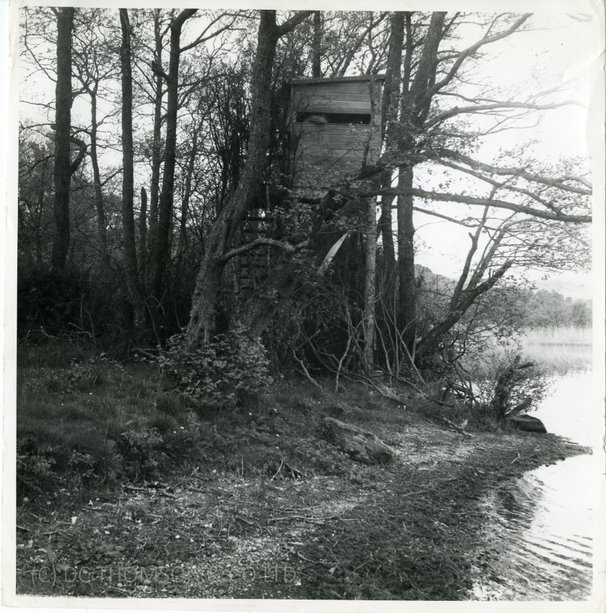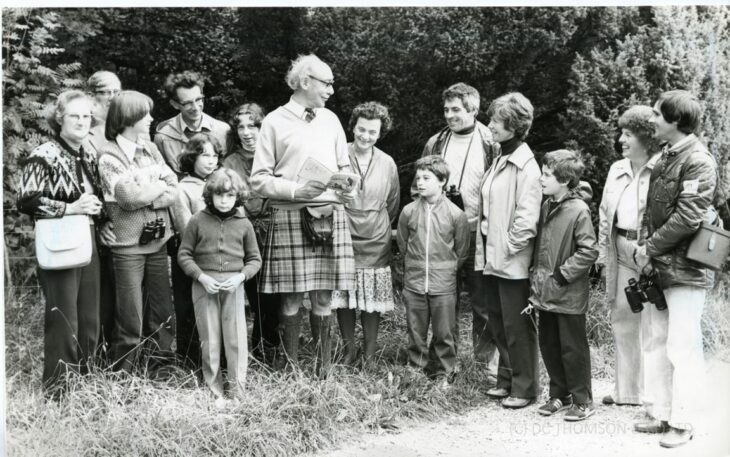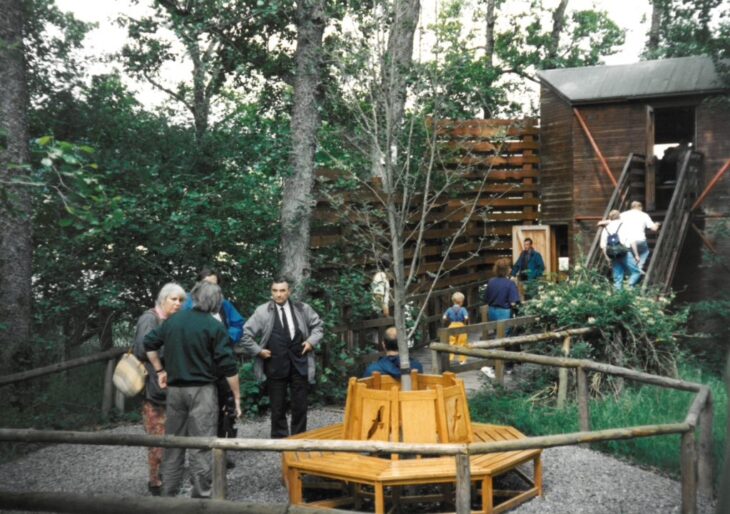History of Lowes Part Two 1972-1984
Back in 2019, in those pre-Covid days of yesteryear, we began a series of blogs on the creation of Loch of the Lowes Visitor Centre and Wildlife Reserve. That year celebrated the 50th Anniversary of the Scottish Wildlife Trust caring for the loch and surrounding woodland.
To refresh your memory, or if you didn’t catch the first installment, please read Part One, covering 1969-71.
So, having purchased the loch in May 1969 and enjoyed the heady excitement of ospreys choosing a lochside Scots pine to nest, the work began. The public was quick to realise Lowes was one of only five known places in the UK to view these magnificent raptors. The hastily built first hide (costing £250) earned its worth many fold by allowing hundreds, then thousands, of people to enjoy seeing the eyrie without disturbing the ospreys.
Building work throughout the winter of 1971-72 saw a small, wooden clad building grow between the oaks, bird cherry, aspen and silver birch trees overlooking the west end of the loch.

Meanwhile, with the ospreys away for the winter, in, on and around the reserve, Warden Maurice Drummond worked with volunteers and experts to continue surveying the area and recording species. The mixed native woodland, wetland habitats, pebbly shoreline and clear waters showed an abundance of wildlife. From dragonflies to woodpeckers, pike and perch to great spotted woodpeckers, fungi, lichen, insects, warblers and siskins to pine martens and abundant red squirrels, the list grew and grew.
The more they surveyed, the more species they found, a process continuing to this day.
1972 proved to be a memorable year for the fledgling reserve. At the start of June, the Duke of Atholl opened the new Visitor Centre, and the Nature Conservancy (now NatureScot) officially designated Loch of the Lowes reserve as a Site of Special Scientific Interest.
That year, Maurice and volunteers welcomed a stream of 61,000 visitors between April-August to view the ospreys while maintaining security. With a purpose-built centre, visitors had the opportunity to learn about more than ospreys (fascinating though they are!). Exhibitions and talks could be held, pamphlets and information sheets distributed, raising awareness of the need for environmental conservation and all manner of questions were answered concerning Scottish wildlife.

Maurice Drummond was a very busy man over these years and ran the centre with volunteers. With their support, he set about organising a 24/7 nest protection programme ‘Osprey Watch,’ which continues to this day. OW co-ordinates a team of volunteers to ensure the breeding pair remain undisturbed and protects the nest from human egg thieves.
Outside the centre windows, yet so close every whisker could be seen, red squirrels frolicked between trees and feeders. Woodland birds became much more than indiscernible ‘wee brown birds’ when even inexperienced viewers could see them close-up, and knowledgeable volunteers were on hand to expand their knowledge in a friendly chat.

The new centre was a warm, dry space for people to gather and for office work to be carried out, but it did not have a water supply and, unbelievable to many today, there were, of course, no computers or even a telephone. In 1973, due to being deemed necessary if an emergency arose regarding the osprey, a telephone was installed in the centre should the police be required.
1984 saw Maurice Drummond retire and Alan Barclay was appointed as the Ranger, a post he held until 2002. The original hide was replaced by the much-needed Double Decker Hide, opened by the Duke of Atholl on 25th June 1984. This allowed greater capacity for visitors to view the loch and eyrie, with the lower hide providing disabled access.

The next blog in this series will cover Alan Barclay’s eventful time at Lowes, egg thieves, the arrival of the internet – and a water supply!
Cherry Bowen
Help protect Scotland’s wildlife
Our work to save Scotland’s wildlife is made possible thanks to the generosity of our members and supporters.
Join today from just £4 a month to help protect the species you love.
Preface
Back in 2019, in those pre-Covid days of yesteryear, we began a series of blogs on the creation of Loch of the Lowes Visitor Centre and Wildlife Reserve. That year …
